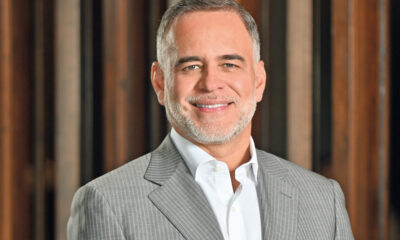Salud
Planificación familiar
Publicado
4 años antesel
Por
Erika Rodríguez
La era de la anticoncepción moderna comenzó en 1960, cuando Food and Drug Administration de los Estados Unidos (FDA por sus siglas en inglés) aprobó por primera vez los anticonceptivos orales, sin embargo, fue hasta 1973 que se fundaron los servicios nacionales de planificación familiar.
A medida que las sociedades se hacen más consumistas, la fertilidad disminuye. Este descenso es la consecuencia de la utilización de los métodos anticonceptivos y del aborto.
A lo largo de su vida reproductiva, la media de las mujeres que viven en áreas rurales experimenta 15 años de amenorrea (ausencia de período menstrual) por la lactancia, cuatro años de embarazos y solamente 48 ciclos menstruales. En el otro extremo, una mujer urbana moderna experimenta 420 ciclos menstruales.
Las mujeres contemporáneas tienen la menarca (primer período menstrual) a temprana edad (de los 9 a los 11 años) y comienzan a tener relaciones sexuales a edades más tempranas (de los 14 a 18 años).
En los Estados Unidos quedan embarazadas más mujeres jóvenes menores de 25 años que en otros países occidentales. Las tasas de embarazos entre las adolescentes de los países de Europa y Canadá oscilan entre el 13 y el 53%, estos porcentajes en países de primer mundo, en comparación con los de tercer mundo en los que se incluye a México, la edad promedio de inicio de relaciones sexuales es de 16 años, mientras que el promedio de edad en embarazos es de 18.
Obviamente, no es cierto que las jóvenes americanas deseen tener estas altas tasas de embarazo. En los últimos años, las adolescentes americanas, así como las mexicanas, abortan cerca de la mitad de sus embarazos.
Entre los 20 y 34 años de edad, las mujeres americanas tienen las tasas más altas de aborto en comparación con otros países, indicando que existe un problema no apreciado, pero real, de gestaciones no deseadas después de la adolescencia.
Se estima que en México y en Estados Unidos alrededor de la mitad de todos los embarazos no son planificados, y más de la mitad de estos terminan en aborto.
Otro factor que contribuye al problema de los embarazos no deseados es el retraso en llegar al matrimonio. La mayor diferencia entre las mujeres latinoamericanas y las europeas es que las primeras menores de 25 años son menos propensas a utilizar cualquier método anticonceptivo.
El uso de anticonceptivos orales (la principal elección de las mujeres jóvenes) es significativamente más bajo en Estados Unidos que en otros países. En México el método de planificación más utilizado son los hormonales inyectables.
La anticoncepción no es nueva, pero su gran desarrollo y aplicación global si lo son, ya que existe una falta de información certera y oportuna por parte del primer nivel de atención en el Sector Salud para individualizar a cada mujer e indicarle el método anticonceptivo más efectivo de acuerdo con su historia clínica y exploración física.
El aborto
La Organización Mundial de la Salud reporta que en la actualidad se producen aproximadamente 25 millones de abortos al año.
Alrededor de un tercio de los embarazos que no acaban en aborto espontaneo o muerte fetal finalizan en aborto inducido. La tasa de abortos inducidos en los hospitales ha ido aumentando considerablemente y más del 50 por ciento de ellos se realizan en mujeres menores de 25 años, con un pico entre los 18 y 19 años de edad, alrededor del 80% son solteras.
Complicaciones de suspender el embarazo
1. Restos óvulo-placentarios en cavidad uterina
2. Sepsis (infección en todos los órganos)
3. Hemorragia uterina
4. Perforación uterina
5. Desgarros cervicales
6. Muerte materna
Anticoncepción postcoital
El uso de altas dosis de estrógenos para impedir la implantación fue realizado por primera vez por Morris y Wegenen en Yale en los años 60.
Este método es conocido comúnmente como “la píldora del día después”, sin embargo, sería más exacto y apropiado llamarle “anticoncepción de urgencia”, para resaltar la intención de protección para una sola vez. Es una opción importante para las mujeres, y debe considerarse si se rompe el preservativo, cuando hay un ataque sexual o si no se utiliza ningún método.
Se estima que la anticoncepción postcoital podría evitar 1.7 millones de embarazos no deseados en los Estados Unidos, así como reducir el número de abortos inducidos de 1.5 millones.
Su mecanismo de acción es que interfiere con la implantación y la supervivencia del embrión y su administración ha de iniciarse tan pronto como sea posible después de las relaciones sexuales no protegidas, nunca después de 72 horas. En caso de que este método de urgencia no sea efectivo, puede ocasionar daños a los fetos.
Family Planning
The era of modern contraception began in 1960, when the U.S. Food and Drug Administration (FDA) first approved oral contraceptives; however, it was not until 1973 that national family planning services were founded.
As societies become more consumerist, fertility declines. This decline is the consequence of the use of contraceptive methods and abortion.
Throughout their reproductive life, the average woman living in rural areas experiences 15 years of amenorrhea (absence of menstrual periods) due to breastfeeding, four years of pregnancies and only 48 menstrual cycles. At the other extreme, a modern urban woman experiences 420 menstrual cycles.
Contemporary women have menarche (first menstrual period) at an early age (9 to 11 years old) and begin having sex at an earlier age (14 to 18 years old).
More young women under the age of 25 become pregnant in the United States than in other Western countries. Pregnancy rates among adolescents in European countries and Canada range from 13 to 53%, these percentages in first world countries, compared to third world countries including Mexico, the average age of sexual debut is 16, while the average age of pregnancy is 18.
Obviously, it’s not true that young American girls desire these high pregnancy rates. In recent years, American teenagers, as well as Mexican teenagers, have aborted about half of their pregnancies.
Between the ages of 20 and 34, American women have the highest abortion rates compared to other countries, indicating that there is an underappreciated but real problem of unwanted pregnancies after adolescence.
It’s estimated that in Mexico and the United States about half of all pregnancies are unplanned, and more than half of these end in abortion.
Another factor contributing to the problem of unintended pregnancies is the delay in reaching marriage. The major difference between Latin American and European women is that Latin American women under the age of 25 are less likely to use any method of contraception.
The use of oral contraceptives (the main choice of young women) is significantly lower in the United States than in other countries. In Mexico, the most commonly used planning method is hormonal injections.
Contraception is not new, but it’s great development and global application are, since there is a lack of accurate and timely information from the first level of care in the health sector to individualize each woman and indicate the most effective contraceptive method according to her clinical history and physical examination.
Abortion
The World Health Organization reports that there are currently approximately 25 million abortions per year.
About one third of pregnancies that do not end in miscarriage or stillbirth end in induced abortion. The rate of induced abortions in hospitals has been increasing considerably and more than 50 percent of them are performed on women under 25 years of age, with a peak between 18 and 19 years of age, about 80 percent of whom are unmarried.
Complications of terminating pregnancy
1. Ovum-placental remains in the uterine cavity.
2. Sepsis (infection in all organs)
3. Uterine hemorrhage
4. Uterine perforation
5. Cervical tears
6. Maternal death
Postcoital contraception
The use of high doses of estrogen to prevent implantation was first performed by Morris and Wegenen at Yale in the 1960s.
This method is commonly known as “the morning-after pill,” however, it would be more accurate and appropriate to call it “emergency contraception,” to emphasize the intent of one-time protection. It is an important option for women, and should be considered if the condom breaks, when there is a sexual assault, or if no method is used at all.
It’s estimated that postcoital contraception could prevent 1.7 million unintended pregnancies in the United States, as well as reduce the number of induced abortions by 1.5 million.
Its mechanism of action is that it interferes with the implantation and survival of the embryo and its administration should be initiated as soon as possible after unprotected sexual intercourse, never after 72 hours. In case this emergency method is not effective, it can cause damage to the fetus.
Te puede interesar

Cuidar nuestro cuerpo no es un lujo ni una opción, es una responsabilidad
En medio de la vida acelerada, con agendas llenas y responsabilidades que parecen no terminar, el cuidado del cuerpo suele quedar en segundo plano. Entre comidas rápidas, falta de ejercicio y el cansancio acumulado, olvidamos que nuestro cuerpo es el vehículo que nos permite avanzar en cada área de nuestra vida. He aprendido por experiencia que la prevención debería ser parte de nuestra cultura; porque si no lo hacemos hoy, mañana podemos pagar un precio muy alto.
Cuidar el cuerpo es más que salud, es visión y legado. Cuando fortalecemos nuestra salud física con una buena alimentación, descanso y ejercicio, también fortalecemos la mente, manteniéndola clara, creativa y enfocada. Un cuerpo sano nos brinda la energía necesaria para avanzar en nuestros sueños con constancia y resistencia, sin rendirnos a la primera dificultad.
Además, al priorizar nuestra salud nos convertimos en ejemplo para otras mujeres, mostrando que el liderazgo integral no solo se habla, se modela en la vida diaria. También es una inversión a largo plazo: lo que hacemos hoy evitará enfermedades y limitaciones en el futuro, permitiéndonos disfrutar plenamente de nuestra misión.
Finalmente, cuidar nuestro cuerpo es también un acto espiritual. Es reconocer que Dios nos lo dio como instrumento para cumplir nuestro propósito, y al mantenerlo sano, lo honramos. Nuestro cuerpo es el puente que conecta lo físico con lo espiritual, y al cuidarlo, nos mantenemos alineadas con el llamado divino.
En conclusión, cuidar el cuerpo no es solo una cuestión de salud personal; es un compromiso con la visión, el liderazgo y el legado que queremos dejar. Porque cuando una mujer cuida de sí misma, también inspira y transforma a quienes la rodean.
Making our body a priority
Taking care of our body is not a luxury or an option, it is a responsibility.
During fast-paced living, packed schedules, and endless responsibilities, caring for our bodies often takes a back seat. Between fast food, lack of exercise, and accumulated fatigue, we forget that our body is the vehicle that allows us to move forward in every area of our lives. From personal experience, I have learned that prevention should be part of our culture; because if we don’t do it today, tomorrow we may pay a very high price.
Caring for the body is more than health—it is vision and legacy. When we strengthen our physical health with good nutrition, rest, and exercise, we also strengthen the mind, keeping it clear, creative, and focused. A healthy body gives us the energy we need to pursue our dreams with consistency and resilience, without giving up at the first obstacle.
Furthermore, when we prioritize our health, we become an example for other women, showing that integral leadership is not only spoken but modeled in everyday life. It is also a long-term investment: what we do today will prevent illnesses and limitations in the future, allowing us to fully enjoy our mission.
Finally, taking care of our body is also a spiritual act. It is recognizing that God gave it to us as an instrument to fulfill our purpose, and by keeping it healthy, we honor Him. Our body is the bridge that connects the physical with the spiritual, and by caring for it, we stay aligned with our divine calling.
In conclusion, caring for the body is not just about personal health; it is a commitment to the vision, leadership, and legacy we want to leave. Because when a woman takes care of herself, she also inspires and transforms those around her.
Salud
Videojuegos: ¿afición divertida o adicción silenciosa?
Publicado
3 meses antesel
01/08/2025Por
Marisol Parra
Los videojuegos son una forma popular de entretenimiento, pero su uso excesivo puede afectar la salud física, mental y emocional.
Hoy en día, los videojuegos han pasado de ser un pasatiempo ocasional a ocupar un lugar protagonista en el tiempo libre de niños, adolescentes e incluso adultos. Gracias al desarrollo del mundo virtual y a la enorme variedad de temáticas y estilos, es fácil entender por qué se han convertido en uno de los entretenimientos favoritos, solo por detrás de las redes sociales.
Pero como en todo, el equilibrio es clave. Para algunas personas, jugar puede ser una actividad sana, controlada y hasta enriquecedora. Sin embargo, para otras, puede transformarse en una adicción con consecuencias reales y preocupantes. Detrás de cada juego hay estrategias bien pensadas basadas en neurociencia: recompensas constantes, desafíos superables, sensación de logro inmediato… Todo esto estimula la liberación de dopamina en el cerebro, una sustancia relacionada con el placer. ¿El resultado? Queremos más y más. Y cuando perdemos el control del tiempo o dejamos de hacer cosas importantes por seguir jugando, hablamos de una posible adicción.
Esa compulsión puede hacer que una persona posponga o abandone actividades básicas como estudiar, trabajar, dormir o convivir con su familia. En estos casos, incluso es común experimentar ansiedad o irritabilidad cuando no se puede jugar, lo que indica síntomas de abstinencia.
El abuso prolongado de videojuegos puede afectar diferentes áreas de la vida. Aquí algunos efectos que conviene conocer:
- Salud mental: irritabilidad, ansiedad, depresión, alteraciones del sueño, trastorno por déficit de atención (TDAH), dependencia emocional del juego.
Salud física: vista cansada, dolores musculares por malas posturas, insomnio.
Comportamiento: conductas desafiantes, baja tolerancia a la frustración, respuestas agresivas.
¿Cómo jugar de forma saludable?
Los videojuegos también tienen beneficios: desarrollan la creatividad, el pensamiento lógico y pueden fomentar la conexión social. Lo importante es establecer horarios, respetar rutinas y equilibrar el juego con otras actividades. En el caso de niños y adolescentes, los padres deben supervisar y poner límites claros, La Organización Mundial de la Salud (OMS) reconoce la adicción a los videojuegos como un trastorno mental, por lo que es importante prevenir, observar cambios de conducta y, si es necesario, buscar ayuda profesional.
Los videojuegos pueden disfrutarse, pero con control. El equilibrio es la clave para que sigan siendo un pasatiempo sano y no un problema en casa.
Video Games: Fun Hobby or Silent Addiction?
Video games are a popular form of entertainment, but excessive use can affect physical, mental, and emotional health.
Nowadays, video games have gone from being an occasional pastime to taking center stage in the free time of children, teens, and even adults. Thanks to the development of virtual worlds and a vast variety of themes and styles, it’s easy to understand why they’ve become one of the most popular forms of entertainment — second only to social media.
But as with everything, balance is key. For some, gaming can be a healthy, controlled, and even enriching activity. For others, it can turn into an addiction with serious and concerning consequences.
Behind every game, there are carefully designed strategies based on neuroscience: constant rewards, achievable challenges, and an immediate sense of accomplishment. All of these stimulate the release of dopamine, the brain’s pleasure chemical. The result? We want more and more. And when we lose track of time or begin to neglect important responsibilities just to keep playing, we may be dealing with a potential addiction.
This compulsion can lead someone to delay or abandon basic activities such as studying, working, sleeping, or spending time with family. In more serious cases, it’s common to experience anxiety or irritability when not playing — signs of withdrawal.
How Gaming Affects Daily Life
Prolonged video game abuse can negatively impact various areas of life. Here are some common effects:
Mental health: irritability, anxiety, depression, sleep disturbances, ADHD symptoms, and emotional dependence on gaming.
Physical health: eye strain, muscle pain due to poor posture, and insomnia.
Behavior: defiant behavior, low frustration tolerance, and aggressive reactions.
How to Game in a Healthy Way
Video games can also have positive effects: they can enhance creativity, logical thinking, and even social connection. The key is to set time limits, respect routines, and balance gaming with other activities.
For children and teens, parental supervision and clear boundaries are essential. The World Health Organization (WHO) has recognized gaming disorder as a mental health condition, making prevention and observation of behavioral changes crucial. If needed, seeking professional help is recommended.
Video games can be enjoyed — but with control. Balance is the key to keeping gaming a healthy and fun hobby rather than a problem at home.

Relaciónate sanamente con tus alimentos durante estas vacaciones; valora tanto el placer como la conciencia de elegir opciones saludables
Como ya sabemos, las vacaciones suelen ser sinónimo de descanso, familia, amigos y comida, lo que hace casi imposible pensar en cuidarnos o ser saludables. Pero ¿y si cuidarse también incluyera disfrutar?
Como nutrióloga te diré que comer de forma saludable no es sinónimo de restricciones, de dietas estrictas o de privarte de alimentos que te agradan. Comer saludable es un equilibrio que busca llevar una relación positiva con la comida, consumiendo alimentos con buen aporte nutricional, pero sin dejar de disfrutar de tus comidas favoritas.
Con este artículo más que darte consejos para ser saludable en vacaciones, te invito a modificar la forma en la que te relaciones con tus alimentos.
1. Escucha a tu cuerpo
La gran mayoría durante esta temporada no sigue una dieta o plan alimenticio, así que, aprender a comer con atención y escuchar a tu cuerpo (cuando tiene hambre y cuando está satisfecho) es la mejor solución sea cual sea la comida.
2. Ordena tus alimentos
En tu plato, empieza con las verduras, luego proteínas (pollo, carne, pescado, huevo, leguminosas), seguido de las grasas (aguacate, nueces, almendras) y por último carbohidratos (pan, arroz, pasta, tortillas), esto te ayudara a aumentar la saciedad y mejorar la digestión.
3. Hidrátate bien
Es importante beber 8 vasos de agua al día, pudiendo incluir tes e infusiones (sin azúcar) para evitar la deshidratación.
4. Muévete con libertad
Camina, explora, conoce, pero siempre procura mantenerte activo, esto te ayudará con la digestión mejorando la motilidad intestinal.
5. Elige con intención y no con culpa
Si vas a darte un gusto, hazlo con plena conciencia y disfrútalo sin remordimientos. Ten en cuenta que un alimento fuera de lo saludable no arruina el proceso, pero una mala alimentación prolongada sí.
Recuerda que en estas vacaciones buscamos nutrir nuestro cuerpo, pero también alimentar el alma.
The Art of Taking Care of Yourself Without Missing Out on Enjoyment
Build a healthy relationship with food during the holidays—honor both the pleasure and the awareness of choosing healthy options.
As we all know, vacations are usually synonymous with rest, family, friends, and food—which makes it almost impossible to think about staying healthy or taking care of ourselves. But what if self-care could also include enjoyment?
As a nutritionist, I can tell you that eating healthily doesn’t mean restriction, strict diets, or depriving yourself of foods you enjoy. Healthy eating is about balance—it means developing a positive relationship with food, choosing items with good nutritional value without giving up your favorite meals.
Rather than offering traditional health tips for vacation, this article invites you to rethink your relationship with food.
1. Listen to Your Body
Most people don’t follow a specific diet or meal plan during this time of year. So, the best solution, no matter what you’re eating, is to practice mindful eating—listen to your body, recognize when you’re hungry, and stop when you’re satisfied.
2. Organize Your Meals
When building your plate, start with vegetables, then move to proteins (chicken, meat, fish, eggs, legumes), followed by fats (avocado, nuts, almonds), and finally carbohydrates (bread, rice, pasta, tortillas). This helps increase satiety and improve digestion.
3. Stay Hydrated
It’s important to drink at least 8 glasses of water a day. You can also include teas and infusions (without sugar) to avoid dehydration.
4. Move Freely
Walk, explore, sightsee—but always try to stay active. Movement helps your digestion and improves intestinal motility.
5. Choose Intentionally, Not Out of Guilt
If you’re going to indulge, do it consciously and without remorse. Remember: one “unhealthy” meal won’t ruin your progress, but prolonged unhealthy habits can.
Remember: This vacation, aim to nourish your body—but also feed your soul.














